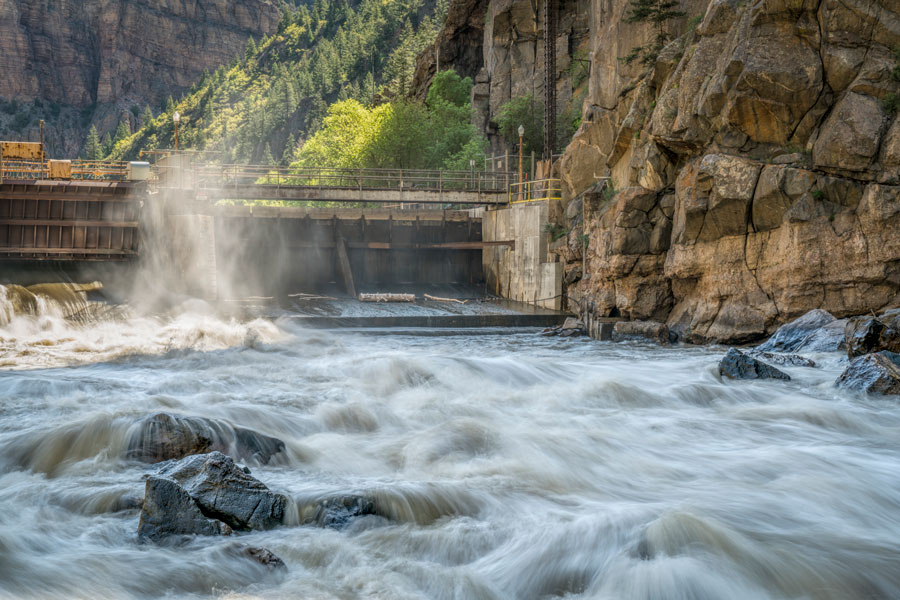This year Western Slope leaders, led by the Colorado River District, struck a $99 million deal to buy the Shoshone hydropower plant’s water rights from Xcel Energy and lease the water back to Xcel to generate electricity. Through the deal, Shoshone’s rights would become the largest, most influential environmental water right in state history.
The change would permanently protect fish and habitat, and also beef up water security on the Western Slope by protecting reliable westward flows against any future sell off by Xcel.
Like the bottom blocks in a game of Jenga, Shoshone’s oldest water right can impact up to 10,600 other upstream water rights because of the plant’s geographic location, according to the Colorado Division of Water Resources.
Western Slope water users have long worried that those flows could change if Xcel shut down the power plant or sold the water rights. Making the flows permanent is vital to the communities, economies and environments that depend on Shoshone’s flows, the district says.
“This has been a goal of the West Slope for literally decades. Questioning if, how and when to do this has long been an issue,” said Peter Fleming, general counsel for the Colorado River District. “The timing is right. The opportunity is here. What better time? That’s, in my mind, what makes it a big deal.”
If the Colorado River District is successful in changing the Shoshone water rights, the rights could become the crown jewel of the state’s instream flow program. Instream flow water rights help boost a river’s flows, creating more depth, swift currents and healthier ecosystems. The Colorado Water Conservation Board is the sole entity that can own and operate instream flow rights.
Xcel has two water rights at Shoshone: one for 1,250 cubic feet per second that dates back to 1905, and a right to 158 cubic feet per second that dates back to 1940.
Of the 12,160 water rights upstream from Shoshone, 87% are junior to Shoshone’s senior water right and 68% are junior to Shoshone’s 1940 water right, according to the Division of Water Resources. That means the rights could protect environmental flows even in the driest of years.
Unlike some water rights that are bound to certain time periods, like the summer irrigation season, Shoshone can divert water year-round. And finally, all of the water Shoshone pulls out of the river shoots right back in after flowing through the power plant — in contrast to other uses such as agriculture, in which some water is sucked up by plants and soils.
“If the full amount of both Shoshone water rights were changed in water court, this would be the largest [instream flow] right in the state,” said Rob Viehl, chief of the stream and lake protection section at Colorado Water Conservation Board.
The district is taking steps toward “Shoshone permanency,” but there are still years of work to do, details to finalize and approvals to secure to actually change the water right to permanently include environmental benefits.
“In water, folks like to achieve the highest degree of certainty available,” Fleming said. “Anything less than a permanent level of protection doesn’t achieve the level of certainty and protection — for not only the West Slope, frankly, it’s all of Colorado — that the Shoshone permanency effort will achieve.”
So far, partners have pledged more than $44 million of the $99 million price tag, including $20 million from the Colorado River District; $20 million from the state, approved by lawmakers in the 2024 Projects Bill; $1 million from the City of Grand Junction; and $2 million from the Ute Water Conservancy District in Grand Junction. The coalition hopes that federal coffers can help fully fund the purchase.
An extended version of this story originally appeared in Fresh Water News, an initiative of Water Education Colorado currently being published in collaboration with The Colorado Sun.
Shannon Mullane writes about the Colorado River Basin and Western water issues for The Colorado Sun.


 Print
Print